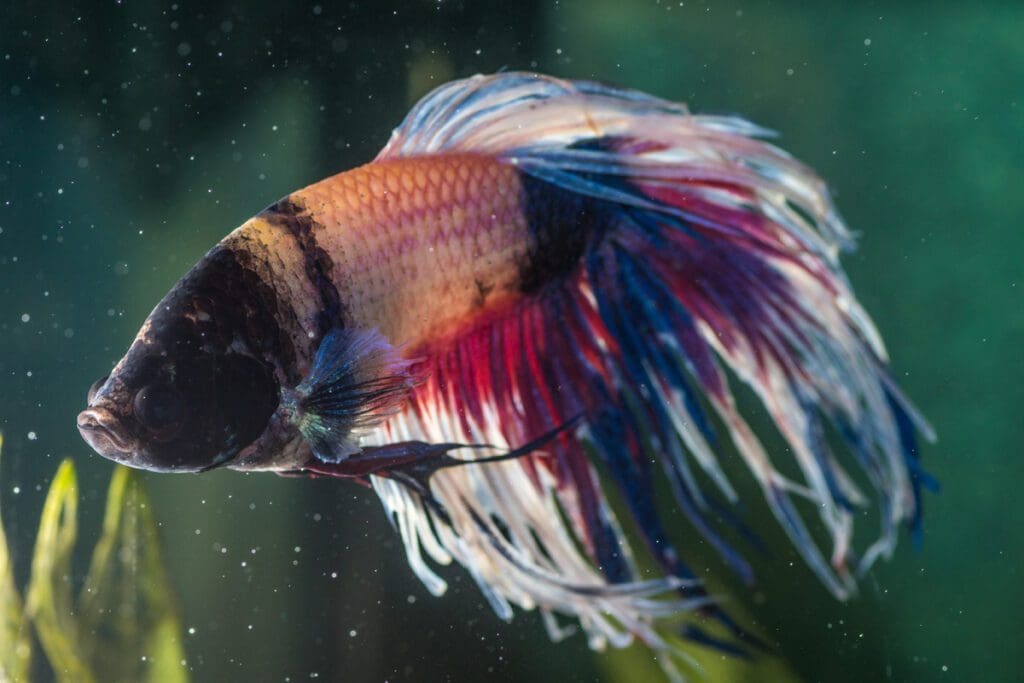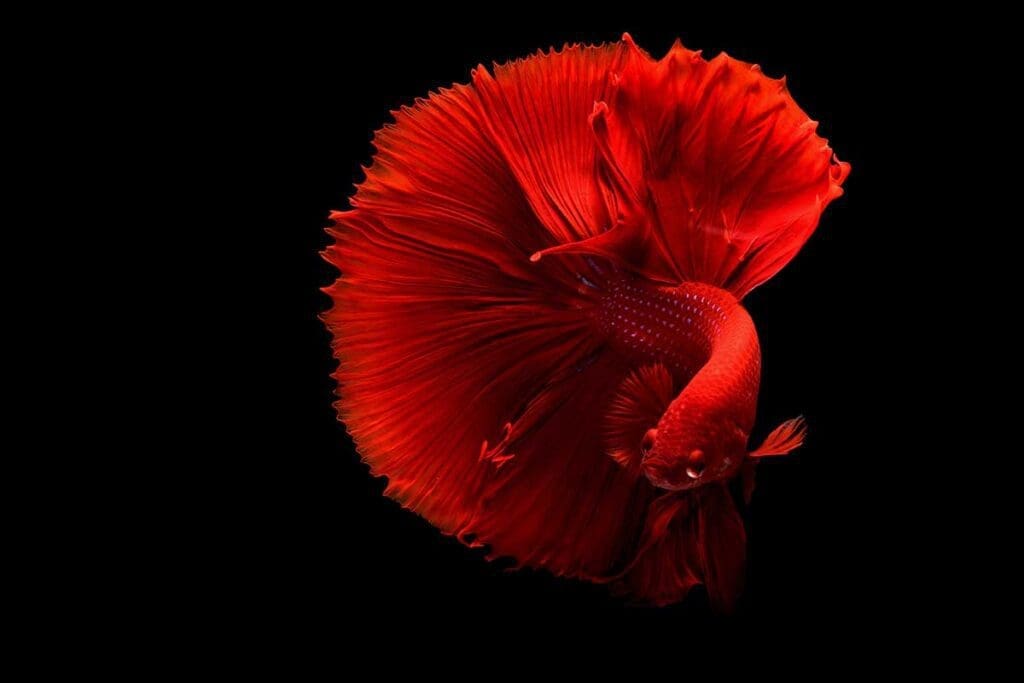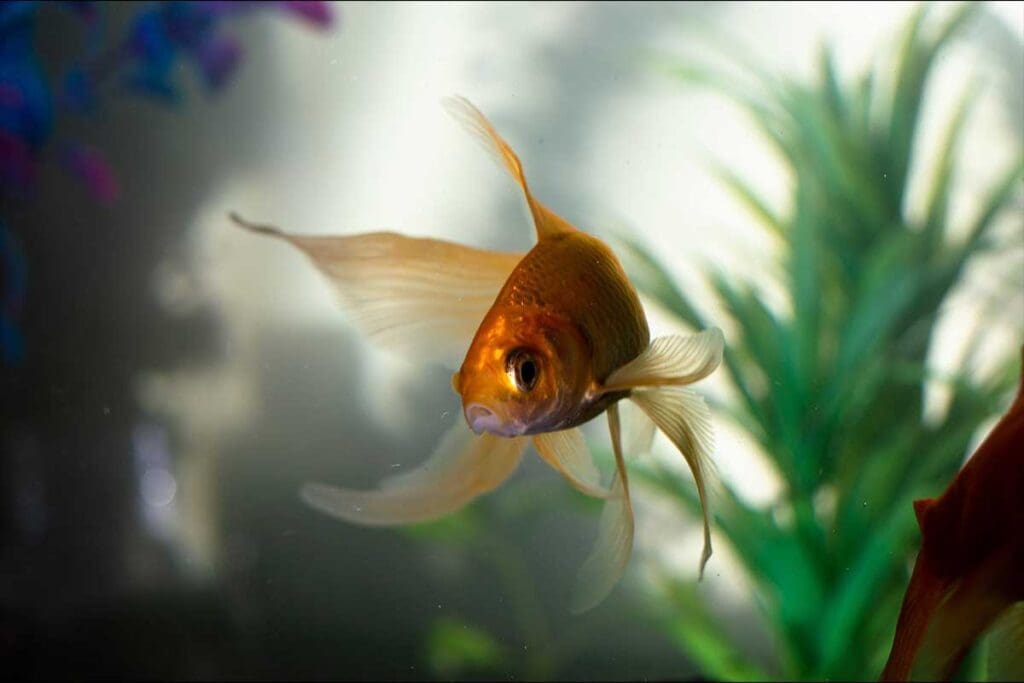Maintaining a freshwater aquarium is a rewarding hobby, but it comes with the responsibility of keeping all your aquatic friends healthy and happy. There are many fresh water fish diseases that can strike even the most well-maintained tanks, so being able to identify and address them quickly is important. This guide will help you identify and find effective solutions for your fish.
It’s important to address issues quickly with the right solutions, otherwise, your attempts at treatment may only have a temporary effect. In this guide, we’ll explore common fish diseases, their symptoms, and how to recognize them.
Parasites
Aquarium parasites are most often introduced when you add new fish to an aquarium. These can quickly jump to all the fish in your tank.
Signs of parasites include lethargy, decreased appetite, bruising, missing scales, flashing, and even death due to severe infestations.
Although there are a variety of parasites that can affect freshwater fish, there are seven that are the most common ones:
- Learnea spp. (Anchor Worms)
- Argulus spp. (Fish Lice)
- Mongenean Trematodes (Flukes)
- Ichthyophthirius Multifiilis (White Spot Disease)
- Icthyobodo (“Costia”)
- Trichodina
- Chilodonella
Here is a look at three types of parasites in more detail:
1. Ich (White Spot Disease)
Ich is a common parasite that causes white cysts on fish’s skin, gills, and fins. Infected fish may rub against objects, display rapid gill movement, and show labored breathing.
2. Flukes
Flukes are flatworm parasites that attach themselves to fish. Symptoms include increased mucus production, scratching against objects, and erratic swimming.
3. Anchor Worms
These parasites are visible as thread-like worms protruding from the fish’s body. Fish infected with anchor worms may exhibit inflammation, reddening, and open sores.
Bacterial Infections
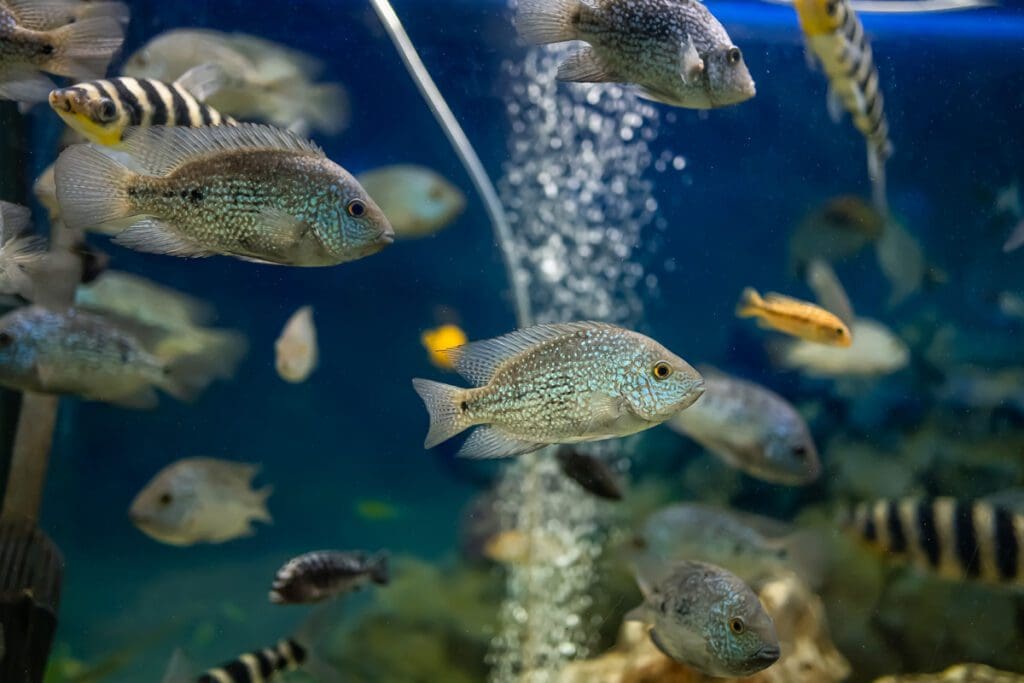
Overcrowding, poor water quality, and inappropriate diet are primary stressors of fish, and most bacterial infections are secondary to these primary issues.
Signs to look for are ulcerations, swelling of the skin (edema), fin erosion, lethargy, loss of appetite, secondary parasitic or fungal infections, and sudden death.
Five bacterial infections are found most commonly: Pseudomonas, Aeromonas, Vibrio, Edwardsiella, and Flavobacterium spp.
In addition, there is the infection of Mycobacterium spp, also called fish tuberculosis, for which there is no cure. This can also potentially infect immune-compromised humans. This type of infection requires consultation with an aquatic veterinarian to maintain your system.
Here is a look at two types of bacterial infections in more detail:
1. Fin Rot
Bacterial fin rot causes the gradual deterioration of fins. You’ll notice fraying or blackening of fin edges and a decrease in fin size.
2. Popeye
Popeye results from a bacterial infection that causes bulging or cloudy eyes in fish. This condition is easily recognizable.
3. Columnaris (Mouth Rot or Cotton Wool Disease)
Caused by Flavobacterium spp, it is commonly mistaken for a fungus. The most common sign is a pale, raised patch that can appear on a fish’s skin at any spot on the body. They typically have a fluffy appearance, hence, the term “cotton wool disease.”
In addition to skin patches, other symptoms are pale gills, lethargy, loss of appetite, and difficulty swimming. Be aware that some strains are more contagious and deadly than others.
Fungal Diseases
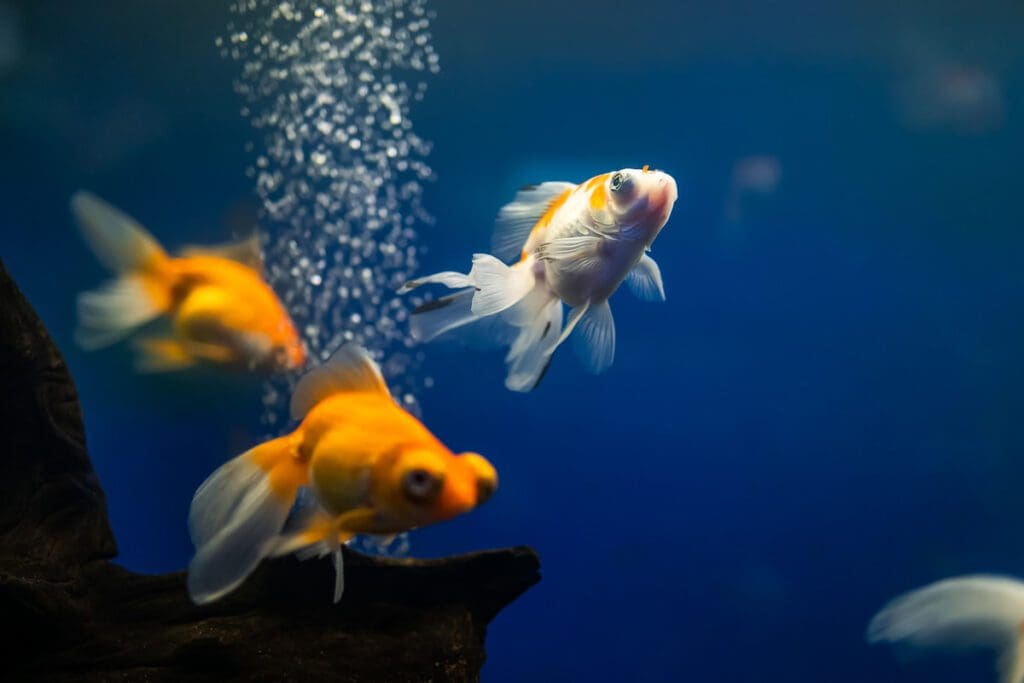
Typically, fungal diseases are found on the dead skin of fish and present as patches that form on decaying fins, dead scales, or spots where traumatic injury has occurred. Fish with unhealthy immune systems often have fungal diseases present.
In most cases, fungal infections resolve on their own as the dead skin is removed. However, consult a veterinarian for persistent infections.
Lymphocystis
Among the few viral diseases that can affect fish, Lymphocystis is the most common one. Lymphocystis appears as white or pinkish cauliflower-like growths on the skin and fins. It’s a viral disease, and affected fish usually remain otherwise healthy.
Most often, symptoms present as small white bumps. Lymphocystis is sometimes mistaken for white spot disease. A veterinarian is needed to examine the fish and distinguish between the various causes of white spots.
Gas Bubble Disease
Gas bubble disease is typically caused by very fine microbubbles in the aquarium, which is commonly the result of misaligned plumbing or rapid temperature changes that might occur during a water change.
Fish affected by gas bubble disease may exhibit bubbles under their skin, gills, or eyes. This occurs when supersaturated dissolved gases are released into the bloodstream, often due to rapid decompression. A veterinarian may be needed to examine and treat the fish.
Cancer
Cancer in fish can show up as unusual growths or tumors on the skin or within the body. Although abnormal growths on the fish are the most typical signs, other symptoms may include changes in behavior, laziness, loss of appetite, weight loss, and abnormal swimming patterns.
Like all cancers, early treatment by an aquatic veterinarian can be critical in fighting the disease, and some tumors can be surgically removed.
Polycystic Kidney Disease
This genetic condition is more common in freshwater aquarium fish species, such as goldfish. Fish with polycystic kidney disease may display abdominal swelling due to cyst formation within the kidneys.
Polycystic kidney disease causes a fish’s body to take on excess water and swell, appearing like a water balloon. Unfortunately, there is no treatment and the disease is always fatal.
Final Thoughts

Early detection and proper identification of fish diseases are important to the health of your aquatic pets. Regular observation of your fish, prompt separation of infected individuals, and consultation with a knowledgeable aquarium specialist or veterinarian can aid in identifying and addressing these diseases effectively.
Remember that a well-maintained aquarium with proper water quality, nutrition, and care can go a long way in preventing many of these diseases from occurring in the first place.
Most importantly, before attempting any fish treatments on your own, it’s best to seek veterinary assistance to achieve more effective results and ensure the safety of all the fish in your tank.

